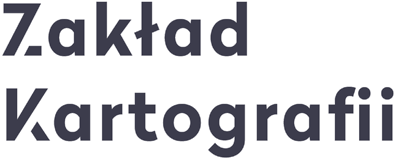MARS Project Summary
MARS - Development of the concept and prototype of the simulation system of the Mars terraformation process
The Project's goal is to develop a prototype of a simulation system that enables the planning of Mars terraformation. It is a process that requires developing a system that executes extremely complex numerical simulations using multi-source data and planetary models. This system will be employed in what-if analyses of the planet's terraformation, e.g., melting ice caps, as considered in the literature, or spraying greenhouse gases.
The first stage of the proposed Project will focus on analyzing the interaction of the atmosphere with the surface of Mars (the sublimation and desublimation of ice, the generation of atmospheric discharges, or dust storms). This stage will also include proposing methods for using spatial models of sections of planets to select optimal areas for various methods of development, such as marking out transport routes or supporting location and navigation systems. The research will be conducted jointly with the Martian group of the Interfaculty Program in Planetary Research of the Jagiellonian University and the Institut de Planétologie et d'Astrophysique de Grenoble (IPAG) of the Université Grenoble Alpes. Independent sources will finance the partners, who will create a joint repository of data, models, and information tools; they will also apply for European Horizon 2020 and ESA (European Space Agency) grants.
The Project will involve implementing four mutually integrated research tasks. The first phase will entail developing a spatial big data analysis system using machine learning methods – a system that will enable the creation of large-scale models of the Mars relief. Development of a classification system (task 2) using deep learning, multi-source data, and models from task 1, as well as planetary measurements carried out by Mars rovers Opportunity (Mars Exploration Rover mission) and Curiosity (Mars Science Laboratory mission), will enable the automation of the process of classifying the terrain forms on Mars. The final stage of the Project's implementation will be the development (task 3) of a simulation system that uses the collected data, terrain forms, and global atmospheric models (developed by the Jagiellonian University and IPAG) to analyze the potential processes of Mars terraformation. Among others, the simulation system will use the idea of a global cellular automaton (CA) with hexagonal basic fields and varied resolutions. One element of the CA's operation will be applying genetic algorithms and testing (thanks to the computational power and functionality of the cyberinfrastructure of the Warsaw University of Technology's Center for Scientific Geospatial Analyses and Satellite Computations, CENAGIS) scenarios for Mars transformation that cover the entire planet on a geologic time scale. The development of a methodology for visualizing objects, phenomena, and processes spatially referenced to the surface of Mars using virtual reality (VR) methods will complete the overall Project.
Due to the use of a massive volume of data from Martian orbiters (MRO, HiRISE, CTX, MOLA) and rovers, as well as sophisticated methods of processing data spatially referenced to the surface of Mars, the implementation of the Project's tasks requires the development and application of innovative algorithms for information analysis and spatial knowledge extraction.
The scientific staff of the Warsaw University of Technology (Faculty of Electronics and Information Technology, Faculty of Geodesy and Cartography) with diverse IT/geoinformatics knowledge and external partners with expert knowledge (in the field of planetary sciences) are necessary to implement the task, mainly in the field of artificial intelligence, spatial data mining, spatial imaging, and mathematical modeling. The Project will result in three 140+ research articles (there is a plan for at least one publication worth 200 points), a deepened interdisciplinary and international collaboration, and applications for European projects.

